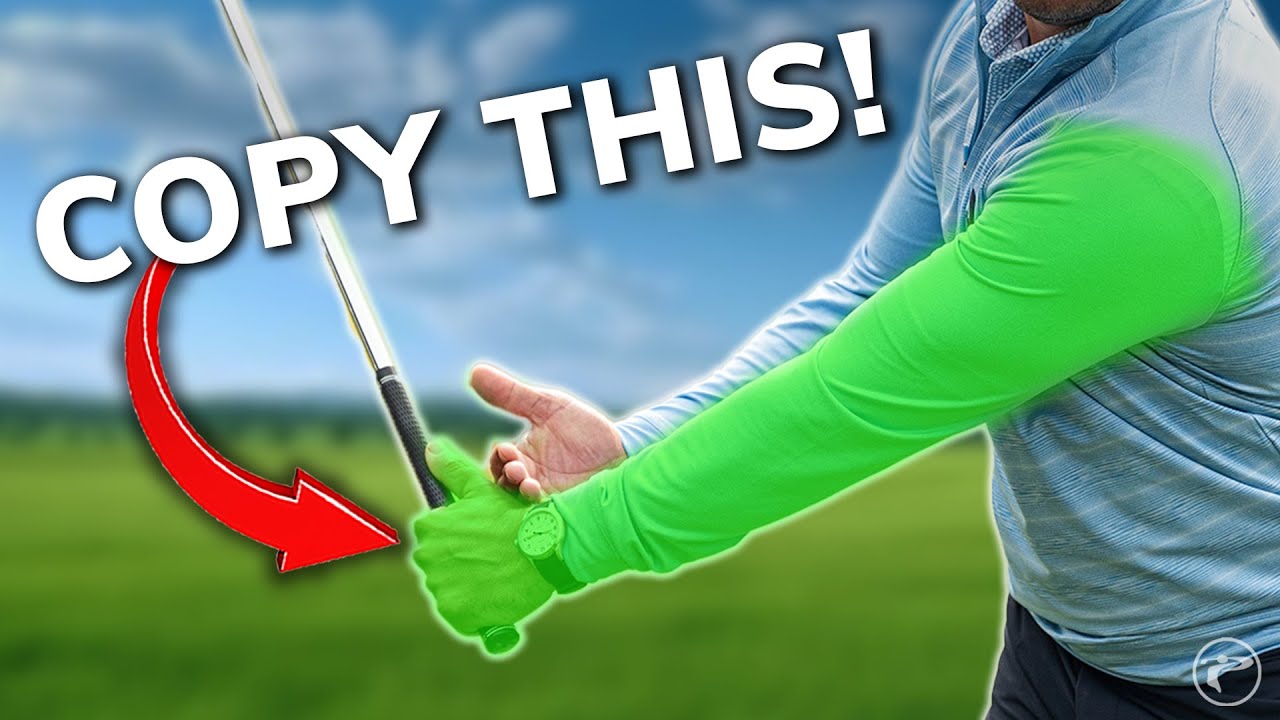
Unlock the secrets of consistent golf ball compression and elevate your game. Follow these expert tips and drills to master the art of creating a powerful, penetrating ball flight.
If you’ve ever stood over a golf ball, swung hard, and watched a lackluster shot, you understand the frustration. Achieving true compression is the key to transforming good shots into great ones. This guide provides a step-by-step approach to address the mechanical and sensory challenges that prevent amateur golfers from achieving consistent compression.
This post breaks down each aspect into actionable steps you can practice both on the range and during your pre-shot routine. Read on for a detailed tutorial covering takeaways, leverage, lower-body rotation, transition sequencing, common faults, and drills for a repeatable compressed strike.
Content Overview
- Why Amateurs Struggle with Compression
- Setting Up Leverage: Club and Hand Position
- The 10%/90% Takeaway Rule
- Right Knee Lock and Pocket Mechanics
- Hinge-and-Turn Dynamics
- Proper Transition Mechanics
- Drills for Training Compression
- Common Faults and Fixes
- Conclusion
Step 1: Why Amateurs Struggle with Compression
Most amateur golfers struggle with compression for a handful of common reasons. It’s not purely about hitting down on the ball; it’s about creating an interconnected chain of leverage, rotation, and sequencing so the clubface can compress the ball against the turf with speed and precision.
Key issues include:
- Early hand lift during the backswing leads to a low club position and disrupted leverage.
- Sliding instead of rotating hips, leading to a loss of vertical and rotational sequence.
- Wrist hinging without body rotation, storing no energy to release effectively.
- Poor transition where the left shoulder moves improperly, and the hips don’t clear, causing you to be behind the shot.
Identifying these symptoms is the first step towards connecting and leveraging your shot to naturally release energy into the ball.
Step 2: Setting Up Leverage: Club and Hand Position
Establishing compression begins before the swing. Your setup should foster leverage and potential energy storage by positioning the hinge point and hands correctly. By mastering these aspects, compression becomes repeatable.
Visual and feel cues include:
- Maintaining a chest-to-hand connection for proper loading.
- Keeping hands low during the turn to encourage club hinge.
- Applying slight pressure away from the handle to store energy.
Remember: the goal isn’t excessive wrist action but ensuring that hands follow the correct path while the body facilitates leverage through rotation.
Step 3: The 10%/90% Takeaway Rule
This practical rule helps golfers ensure the right arm movement initiates the swing while the body completes the motion. This balance helps maintain the correct path and relationship between hinge and rotation.
- Start with a small arm move to initiate the swing.
- Allow body rotation to maintain a low-hand feel throughout.
- Keep hands from raising too high, staying connected to the chest.
This method prevents early casting and allows the body turn to load the swing.
Step 4: Right Knee Lock and Pocket Mechanics
Lower-body control is crucial for compression. Focus on a sensation where the right knee remains flexed and the turn originates from the hips or “pockets.”
- Maintain right knee flexion to preserve posture and connection.
- Engage your “pockets” to drive correct hip rotation and avoid sliding.
- Use spatial cues for body orientation, such as “turn your left pocket to the ninth green.”
Spatial cues help golfers maintain rotational clarity and promote effective sequencing.
Step 5: Hinge-and-Turn Dynamics
A powerful swing isn’t solely dependent on wrist hinge. It’s about combining hinge with a body turn to effectively store and release energy.
- Avoid hinging without turning to ensure energy is effectively stored.
- Focus on a chest-to-hand connection at the top, signaling proper leverage creation.
The synergy of hinge and turn achieves the stored energy “zebra” moment pivotal for compression.
Step 6: Proper Transition Mechanics
Transitioning smoothly is key to converting leverage into impactful momentum. Focus on staying “in the shot” to achieve clean ball contact.
- Initiate the downswing with lower body movements, avoiding upward sliding.
- As hips clear, guide the left shoulder down, driving forward with your arm.
- Stay grounded in the shot, favoring rotation over a standing-up motion.
High-level golfers consistently maintain left hip movement and shoulder adjustment for optimal compression.
Effective players engage down-and-clear actions, keeping the left shoulder down for consistent contact.
Step 7: Drills for Training Compression
These drills help refine movement patterns aligned with our earlier key principles. They’re simple, yet critical for absorbing the core sensations and mechanics necessary for compression.
Drill 1: Small-to-Large Takeaway
- Establish a normal stance, start with a small arm move, and let the body finish the backswing.
- Repeat for several rounds to reinforce the correct hand path.
This drill aids in reducing early casting while promoting the correct turn.
Drill 2: Right-Knee Lock and Pocket Turn
- Focus on keeping your right knee flexed without letting it slide or straighten.
- Practice slow swings, ensuring proper hip and shoulder rotation.
These mechanics prevent sliding and ensure consistent rotational control.
Drill 3: Hinge-and-Turn Pressure
- Utilize a mid-iron to establish a hinge and apply grip pressure.
- Combine this with body rotation to feel energy transfer.
The sensation of stored energy effectively guides the shot forward.
Drill 4: Left Hip Clearance and Shoulder Drop
- Begin a downswing focusing on hip clearance and shoulder drop.
- Monitor movements using mirrors or video to ensure correct form.
Follow these drills to seamlessly integrate crucial compression sequences into your game.
Step 8: Common Faults and Fixes
Common golf faults can usually be identified and remedied with simple cues. Here are a few reference points:
Fault: Early Hand Elevation
Solution: Practice the 10%/90% takeaway, ensuring hands remain lower.
Fault: Hip Sliding During Downswing
Solution: Reinforce right knee lock and complete lower body rotation.
Fault: Hinging Without Rotation
Solution: Combine hinge with body turn to store and release energy.
Fault: Left Shoulder Moving Forward
Solution: Emphasize left hip clearance with shoulder drop exercises.
Fault: Flipping or Scooping at Impact
Solution: Concentrate on connection and correct body rotation through drills.
Putting Everything Together
Utilize this warm-up routine before practice or play to foster an engaging and cohesive swing mechanics sequence:
- Conduct ten slow half-swings emphasizing proper hand path with 10%/90% rule.
- Implement eight half-swings focusing on knee flex and pocket turns.
- Repeat six hinge-and-turn drills, feeling the handle pressure transition.
- Conclude with six slow swings accentuating hip clearances and shoulder alignment.
- End with twelve controlled ball strikes centering on generated compression.
Executing this sequence increases ball-striking confidence, resulting in adept compression dynamics each time.
FAQ
What exactly is “compression” in golf?
Compression occurs when the clubface impacts the ball with a downward stroke, achieving shaft lean and hands slightly forward at impact. The ball is briefly “compressed” against the clubface, optimizing launch speed, spin, and trajectory.
Why do many amateurs struggle to create compression?
Many amateurs exhibit early hand elevation, hip sliding, lack of rotation during hinging, incorrect downswing sequencing, and wrist flipping, all of which disrupt leverage and geometry necessary for compression.
How important is the lower body in creating compression?
A stable lower body ensures rotational dynamics that support the upper body’s leverage delivery. Slide or stand too soon, and compression becomes much harder to achieve.
Should I focus on hitting down steeply to compress the ball?
A steep attack isn’t inherently necessary; it’s more about achieving proper shaft lean and hand positioning. Focus on executing sequence and body connection for optimized compression.
How long will I notice improvement using these drills?
Individual results vary, but many golfers observe noticeable connection and strike improvement promptly. Sustained practice integrating these drills will promote permanent change.
What quick in-round cues can help maintain compression?
Utilize cues like “Hands low, pockets turn, right knee flex, left hip clear, shoulder drop” during your pre-shot routine for ingrained sequencing and compression.
Conclusion
Golf compression results from a synergy of connection, leverage, and sequence. By establishing hand path foundations, incorporating turn into hinge, maintaining knee control, emphasizing pocket rotations, and fine-tuning transitions, the drills outlined ensure a streamlined path to compression mastery.
This routine threads together the necessary elements of swing precision, transforming ball-striking dynamics through dedicated practice and engagement. Integrating these techniques reshapes how the ball contacts with the clubface, producing consistently firmer, more engaging flights and results.
Commit today to employing this warm-up sequence before each session, turning dedication into performance success. Compression is within reach through comprehensive practice, ultimately enhancing consistency across your golf endeavors.


0 Comments